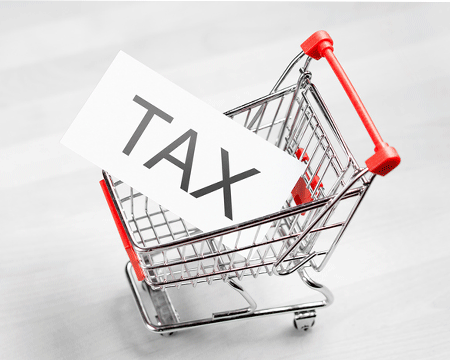If your business sells to or operates in more than one state, it’s important to understand what nexus is and how this impacts your business. The Supreme Court’s South Dakota v. Wayfair decision in 2018 thrust the need to understand nexus and how it influences your sales tax risk into the limelight.
What is nexus?
Nexus in its basic form is a connection. Nexus occurs when a business has a connection with a state in which they do business. Creating nexus in a particular state or taxing jurisdiction can expose your business up to a variety of tax obligations. These will vary by the state.
How does the Wayfair decision impact nexus?
The Wayfair decision provides states the opportunity to collect sales tax from businesses making sales in their state without a physical presence. In addition, all businesses with a physical presence in one state, but sales or employees temporarily or permanently assigned in others, may have new sales tax reform filing obligations.
Knowing the new rules and whether you have nexus in a state is an important first step in identifying your sales tax risks.
How do you identify sales tax risks?
State sales tax rules vary, usually depending on the number of transactions and gross revenue from sales. Knowing these new nexus operational triggers is important to avoid costly penalties.
Here are a few key questions to help identify your sales tax risk areas:
- Do you sell products in multiple states?
- Do you ship your products across state borders?
- Are you an online retailer or software developer?
- Do you send employees to multiple states?
If you answered “Yes” to any of the questions, you should further evaluate your sales tax risks.
Identify your sales tax risk today.
For example, you are a wholesaler of parts located in Wyoming, and you ship parts to various resellers in many states across the U.S. However, you also allow consumers to call you directly to place orders. You probably have a filing obligation in this case, depending on the volume of sales or number of transactions completed directly with consumers. For wholesaler activities, those sales made to resellers with proper sales tax exemption certificates would require a zero sales tax filing obligation. However, the direct-to-consumer component adds a retailer component outside your wholesaler business that may require you to collect and remit sales tax in specific states on the direct consumer sales.
How can I comply with sales and use tax guidelines?
The following steps outline key considerations for businesses as they work to comply with the new sales and use tax rules.
Step 1: Determine Whether Your Business Has Nexus
Each state has different rules for determining whether a business has nexus. If a business does not have nexus with a state, it is not required to collect and remit sales tax to the state.
Common Nexus Types:
- Physical presence in a state, including employees, real estate, or tangible personal property.
- Sales numbers that exceed the state-imposed thresholds.
- Independent contractors working for the business in the state.
- Affiliates located in the state working with the business to promote its sales.
- Storage of tangible personal property in the state.
- Distribution of tangible personal property.
- The business engages in trade shows within the state.
- The business engages in drop shipment activities in the state.
Step 2: Registration
Businesses need to register for a business license and sales and use tax license for the jurisdictions in which the business has nexus. A business is required to have a business license and a sales tax license to remit tax to the state. Both licenses can be obtained either through a state’s website or by filing a paper form with the state.
Step 3: Determine Taxability
A business must determine whether the products and services the business sells are taxable. Each state has different rules pertaining to the taxability of the products and services sold to residents of the state. Even if a business does not have any taxable sales in a state, if it has nexus, the business must still register for a sales tax license and file a return showing no taxable sales were made.
Step 4: Calculate Tax Rates
When a company determines its products or services are taxable, it must collect sales tax on each purchase. In most cases, the state, county, and city jurisdictions will all impose a different tax rate for taxable items. Therefore, a business must be aware of the jurisdiction rules of each state and local authority. For instance, a company should determine whether a state imposes tax on where the sale took place (origin jurisdictions) or where the product was delivered (destination jurisdictions).
Step 5: Document and Collect Tax
It is important for businesses to add tax rates to invoices and collect tax from customers. After determining the tax rates, a business should include a separate line item on each invoice that shows the tax it is charging its customer. By doing so, the business will be able to quickly identify how much tax it charged, as well as the amount of tax the customer paid and whether the item purchased was exempt. This is very important if the business is audited.
Step 6: Complete and File Sales Tax Returns
The last step is to file a sales and use tax return with the state. Some states require an electronic return to be filed from their website. Depending on the state and the amount of sales your business has, deadlines for returns can vary. Make sure you confirm the deadlines with each state via their website. If a return is late, then penalties and interest will accrue.
Step 7: Maintain Records
A business should maintain internal records tracking the sales made, the amount of taxable transactions, and the amount of non-taxable or exempt transactions. Each state has their own statutory requirement for how long records need to be retained, and we recommend 7 years. Furthermore, a business must keep in its records any exemption certificates a purchaser has supplied as proof the customer’s purchases were not subject to sales tax. This will be important if the business is audited.
The Importance of Understanding Nexus and Your Potential Sales Tax Risk
Sales tax reporting requirements are getting more complicated. If your business has nexus and has not registered for or filed sales tax returns, you may have outstanding sales and use tax liabilities. If this is the case, most states allow a business to voluntarily disclose if it has not complied, and penalties and interest could be waived.
Let us help you make sense of your sales and use tax liability.
We're Here to Help


